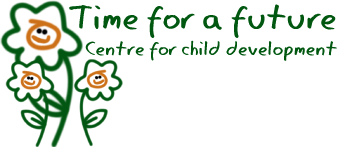CHecklist for Autism in Toddlers (CHAT)
by Dr Avril Brereton
What is the
CHAT?
The
CHAT is not a diagnostic instrument. It is a
screening instrument that can identify children at
risk for autism who are 18 months old and who
require further comprehensive assessment. Early
identification of autism is important but is not an
end in itself. How service providers respond to very
young children with autism and their families is
critical. Early identification is only useful if
followed up by access to early intervention
programmes, parent education and support and a range
of health, education and welfare services for each
child and family.
Background
The
CHAT was developed by researchers at Guy's Hospital
London, the University of Cambridge and University
College London. Their aim was to establish if autism
could be detected at 18 months of age. The first
study by Baron-Cohen, Allen and Gillberg was
published in 1992 (Baron-Cohen et al., 1992). At
that time autism was usually detected at about three
years of age. The study focussed on impairments in
early social communication; in particular, joint
attention and pretend play. These are usually
present in typically developing children by 18
months of age. Problems with joint attention and
pretend play at 18 months were considered likely
precursors to the later impairments of children
diagnosed with autism - impaired language, social
and communication skills. Initially, 91 toddlers
took part. General Practitioners (GPs) and health
visitors administered the checklist. Four children
failed two or more of the items and at 30 months of
age were diagnosed with autism. The other 87
toddlers passed four or more items and continued to
develop normally when followed up at 30 months of
age.
In a
later study, a large population of 16,000 children
aged 18 months was screened using the CHAT
(Baron-Cohen et al., 1996). This study concluded
that consistent failure of the three key CHAT items
(protodeclarative pointing, pretend play and gaze
monitoring) at 18 months carried an 83.3% risk of
autism.
Administration & Scoring
The
CHAT (see below) has two sections. Section A has 9
questions that are answered by parents. Section B
has 5 items that are observations made by the GP or
primary health care worker. There are five key
items: A5 (pretend play), A7 (protodeclarative
pointing), Bii (following a point), Biii
(pretending) and Biv (producing a point). If a child
fails all five key items, they have a high risk of
developing autism.
Further Reading
Baron-Cohen et al. (1992) Can autism be detected at
18 months? the needle, the haystack and the CHAT.
British Journal of Psychiatry, 161, pp.
839-843.
Baron-Cohen et al. (1996) Psychological markers in
the detection of autism in infancy in a large
population. British Journal of Psychiatry,
168, pp. 158-163.
Baron-Cohen et al. (2000) Early identification of
autism by the CHecklist for Autism in Toddlers
(CHAT). Journal of the Royal Society of Medicine,
93, pp. 521-525.
CHAT
Section A - Ask Parent:
Yes or
No?
____ 1)
Does your child enjoy being swung, bounced on your knee,
etc?
____ 2)
Does your child take an interest in other children?
____ 3)
Does your child like climbing on things, such as up
stairs?
____ 4)
Does your child enjoy playing peek-a-boo/hide-and-seek?
____ *5)
Does your child ever pretend, for example, to make a cup
of tea using a toy cup and teapot, or pretend other
things?
____ 6)
Does your child ever use his/her index finger to point,
to ask for something?
____ *7)
Does your child ever use his/her index finger to point,
to indicate interest in something?
____ 8)
Can your child play properly with small toys (e.g. cars
or bricks) without just mouthing, fiddling, or dropping
them?
____ 9)
Does your child ever bring objects over to you, to show
you something?
Section B - GP's
observation
Yes or No?
*
Indicates critical question most indicative of autistic
characteristics
____ i)
During the appointment, has the child made eye contact
with you?
____ *ii)
Get child's attention, then point across the room at an
interesting object and say "Oh look! There's a (name a
toy)!" Watch child's face. Does the child look across to
see what you are pointing at?
NOTE - to
record yes on this item, ensure the child has not simply
looked at your hand, but has actually looked at the
object you are pointing at.
____ *iii)
Get the child's attention, then give child a miniature
toy cup and teapot and say "Can you make a cup of tea?"
Does the child pretend to pour out the tea, drink it
etc?
NOTE - if
you can elicit an example of pretending in some other
game, score a yes on this item.
____ *iv)
Say to the child "Where's the light?" or "Show me the
light". Does the child point with his/her index finger
at the light?
NOTE -
Repeat this with "Where's the teddy?" or some other
unreachable object, if child does not understand the
word "light". To record yes on this item, the child must
have looked up at your face around the time of pointing.
____ v)
Can the child build a tower of bricks? (If so, how
many?) (Number of bricks...)
|
